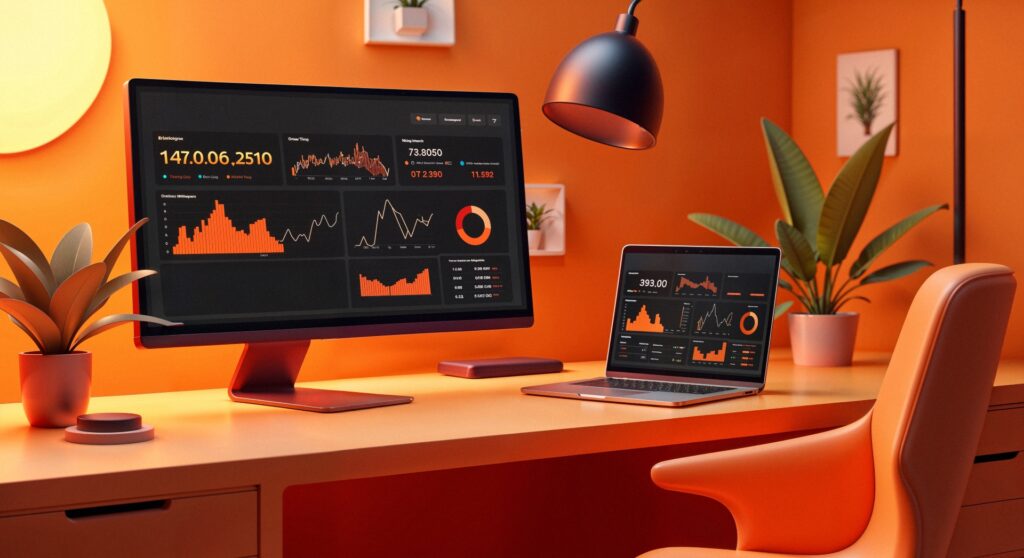Martal Group:B2B Lead Generation and Sales Blog
Information Technology Marketing Strategy for 2026: Maximizing ROI with Analytics & ABM
Introduction In the fast-paced world of information technology marketing, every dollar is under scrutiny. B2B tech companies are being asked to achieve more with the same (or less) budget, making ROI-focused strategies more critical than ever. Marketing leaders in IT services know that success today won’t come from brute-force spending, but from sharper strategy, smarter […]
-
12.12.2025
Introduction In the fast-paced world of information technology marketing, every dollar is under scrutiny. B2B tech companies are being asked to achieve more with the same (or less) budget, making ROI-focused strategies more critical than ever. Marketing leaders in IT services know that success today won’t come from brute-force spending, but from sharper strategy, smarter […]
-
12.11.2025
Introduction Web design marketing is about showcasing your agency’s value to attract the right clients. It merges creative design with strategic promotion to drive more leads and sales for web design, UI/UX, and development agencies. In an industry where 75% of people judge a company’s credibility by its website design (10), marketing your services effectively […]
-
12.10.2025
Introduction Is your web development agency struggling to fill its sales pipeline with qualified prospects? You’re not alone. In an industry valued at over $58.5 billion (expected to reach $100B by 2031) (2), competition among web development and UI/UX agencies is fierce. Without a robust marketing strategy, even the most talented developers risk an empty […]
-
12.09.2025
Introduction Cleantech marketing in 2026 sits at the intersection of rapid industry growth and evolving B2B buyer expectations. The global clean technology market is expanding at a remarkable pace – estimated at about $916 billion in 2024 and projected to reach $1.84 trillion by 2030 (12.7% CAGR) (1). This boom means more cleantech firms competing […]
-
12.08.2025
Major Takeaways: LinkedIn Outreach Personalization Wins in 2025 Brevity Beats Complexity Connection Notes Still Matter Subject Lines and First Lines Drive Opens InMail vs. Connection Messaging Timing and Trigger Events Improve Replies Structure Follow-Ups for Higher ROI Cold Outreach Isn’t Dead—It’s Just Evolved Introduction LinkedIn surpassed 1 billion members in early 2025 and now drives […]
-
12.08.2025
Introduction In the fast-evolving world of managed IT services, having a solid MSP marketing strategy is no longer optional – it’s essential for growth. Many MSPs (Managed Service Providers) have relied on referrals and word-of-mouth for years, but 2026 brings new challenges and opportunities. Buyers are more digital-savvy and demand value-driven outreach across multiple channels. […]
-
12.05.2025
Introduction Security marketing has evolved into a sophisticated discipline at the intersection of security and B2B demand generation. In a world where data breaches and cyber threats dominate headlines, marketing security solutions requires more than generic tactics – it demands strategy, credibility, and industry insight. If you’re a CMO, CRO, VP of Marketing/Sales, or SDR […]
-
12.04.2025
Introduction Marketplace marketing is fast becoming a cornerstone of B2B growth strategy as we head into 2026. Online marketplaces are surging in number and influence, creating new opportunities – and intense competition – for B2B companies. In fact, the global B2B e-commerce market hit $20 trillion in 2024, yet B2B marketplaces still account for only […]
-
12.03.2025
Introduction B2B sales and marketing leaders in the education sector face a perfect storm of challenges – from seasonal budgets and committee decision-making to digital disruption. This playbook provides an authoritative, omnichannel strategy guide to help you generate qualified education leads and accelerate growth. As a sales or marketing leader in an EdTech or education […]








